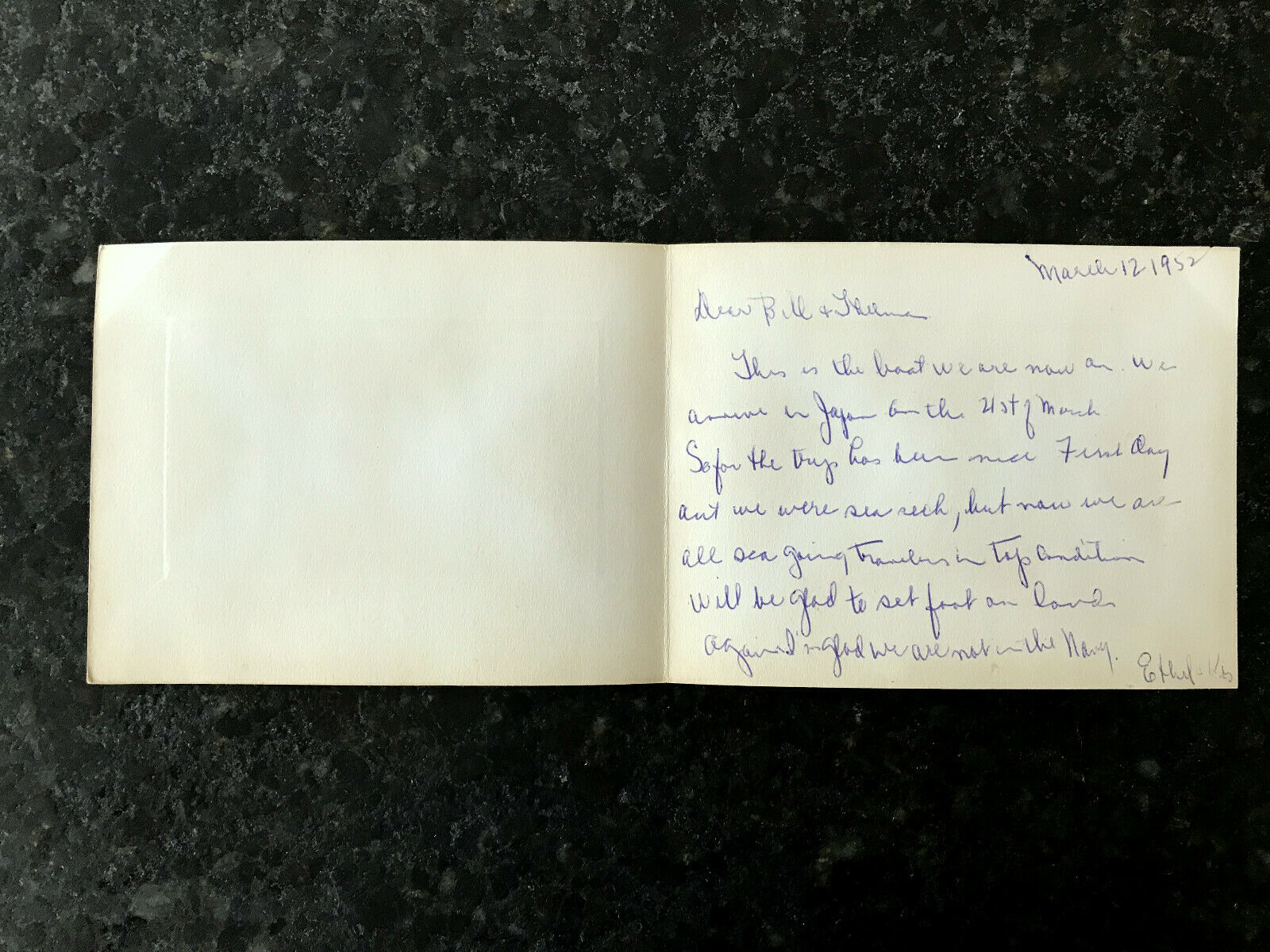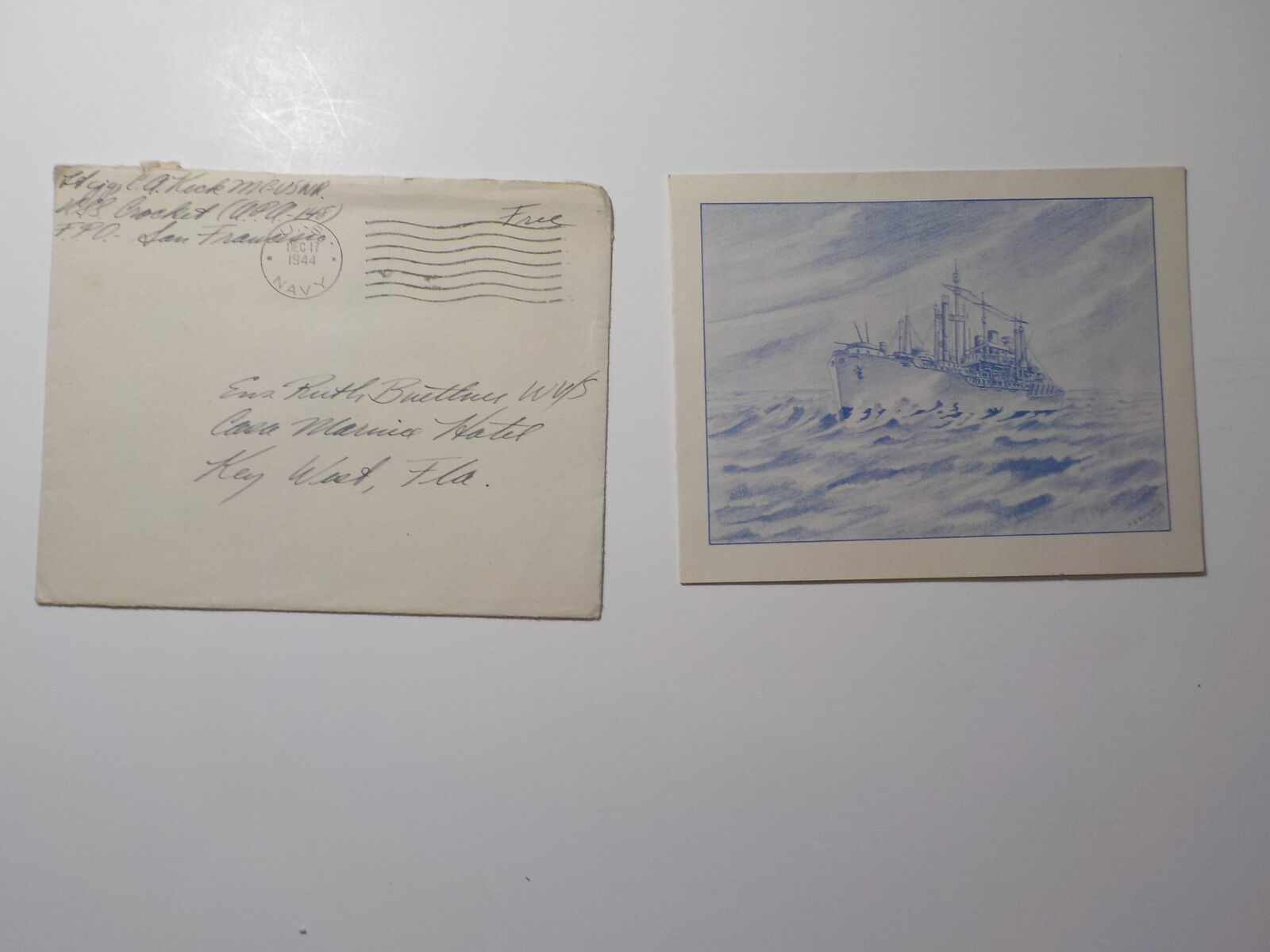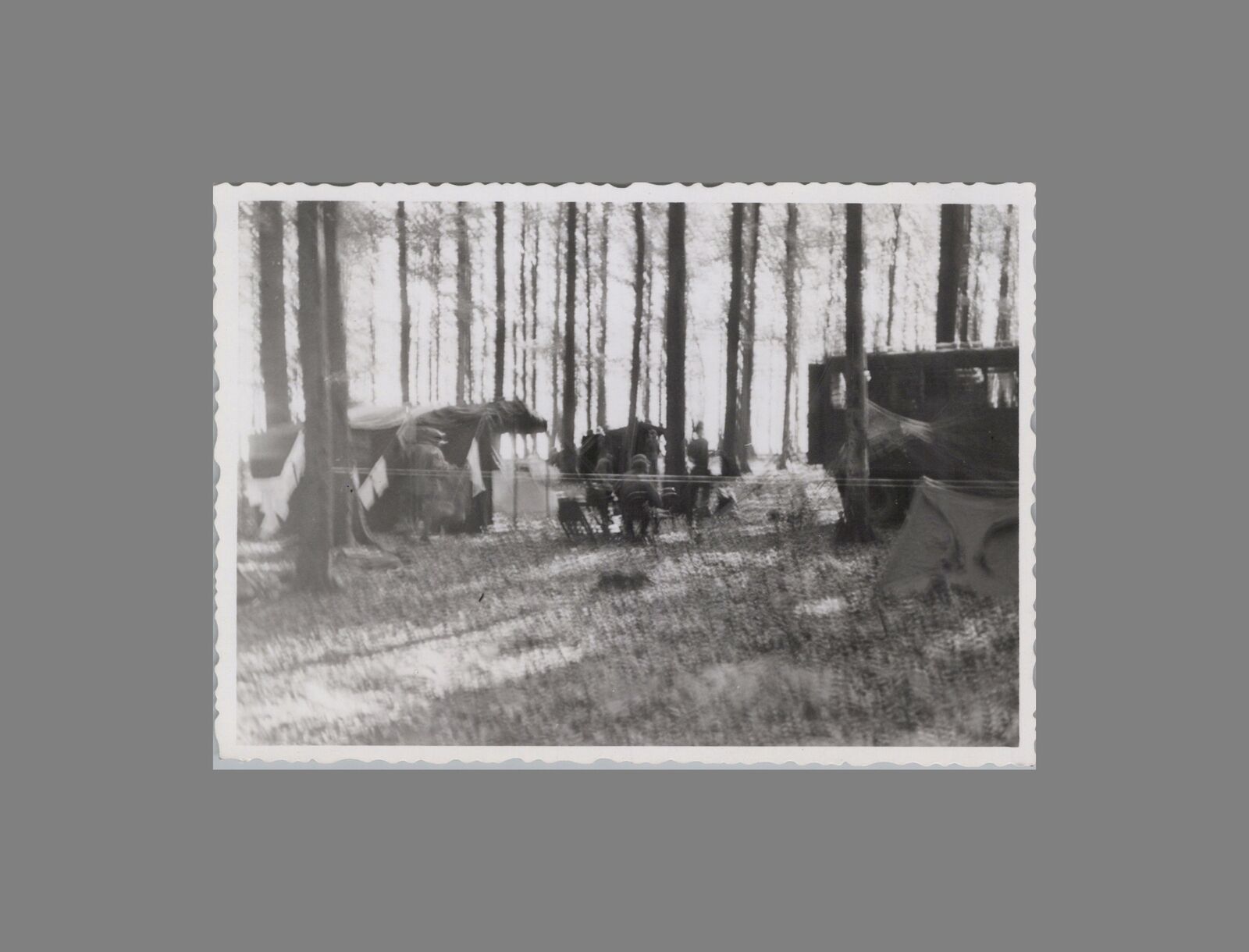-40%
WWII KOREAN WAR NAVY USS GENERAL ANDERSON AP-111 TROOP TRANSPORT SHIP PHOTO CARD
$ 5.27
- Description
- Size Guide
Description
Here is a greeting card with a real photo picture of theU. S. S. GENERAL A. E. ANDERSON
(AP-111)
A BUSY US NAVY TROOP TRANSPORT SHIP THAT SAW SUCCESSFUL SERVICE IN WWII and THE KOREAN WAR – MAKING MANY TRANSATLANTIC VOYAGES!
"All Hell Can't Stop Us"
The USS General’s most famous voyage was the World War II era return of prisoners of war rescued by the
Raid at Cabanatuan
. The
General A. E. Anderson
departed Hollandia, New Guinea carrying 489 POWs. It traveled a longer route due to threats from the Japanese. It arrived in San Francisco on March 8, 1945, amid great fanfare and a band playing "Don't Fence Me In.” Film footage of this voyage can be seen in the ending credits of the movie, "
The Great Raid
."
During the Korean War, she made many transport runs from West Coast ports to Japan and Korea as she supported
United Nations
forces in Korea.
In total, she served the United States Navy from 1943 to her decommissioning on Nov. 10, 1958.
The inside of the card bears a Korean War-Date message from ‘Ethel & Vin,’ dated March 12, 1952, to Bill & Thelma, about their voyage aboard the USS General A. E. Anderson, in part:
“This is the boat we are now on.
We arrive in Japan on the 21
st
of March…we were sea sick…will be glad to set foot on land again & glad we are not in the Navy…”
The card measures 5 ½” x 4¼” and is in VERY FINE CONDITION.
<
<>
>
HISTORY OF THE USS
GENERAL A. E. ANDERSON
(AP-111)
USS
General A. E. Anderson
(AP-111)
was a
troop transport
that served with the
United States Navy
in
World War II
and the
Korean War
.
General A. E. Anderson
was launched 2 May 1943 under a
Maritime Commission
contract by the
Federal Shipbuilding and Drydock Company
of
Kearny, New Jersey
; acquired by the Navy 25 August 1943; placed in partial commission the same day for transfer to
Baltimore
for conversion to a transport by the
Maryland Drydock Company
; and placed in full commission at Baltimore 5 October 1943, Capt. William E. Miller in command.
World War II
From 25 October 1943 to 21 March 1944
General A. E. Anderson
made four round-trip transport voyages out of
Norfolk, Virginia
to
Casablanca
,
French Morocco
. Underway again 26 March 1944, she returned to
North Africa
and touched at
Gourock
, Scotland, before steaming to
Bermuda
, where
British
censors and their families embarked for passage to
New York
. The ship reached New York 7 May, and following a round-trip voyage to
Belfast
,
Northern Ireland
(carrying the Nebraska "All Hell Can't Stop Us" 134th Infantry Regiment along with other elements of the 35th Division, including the Band, and accompanied by the cruiser USS Marblehead. Troops were disembarked at Avonmouth, Port of Bristol") she stood out of Norfolk 29 June for
Bombay
, where her troops debarked 7 August.
General A. E. Anderson
returned to
San Pedro, California
, 11 September 1944, and made another long round-trip voyage thence to Bombay via
Australia
, returning 9 December.
Until the summer of 1945 the busy ship made two round-trip voyages from
San Francisco
to
Hollandia
and
Leyte
, sailing from Leyte to reach Norfolk 22 July 1945. The most famous voyage was the return of prisoners of war rescued by the
Raid at Cabanatuan
. The
General A. E. Anderson
departed Hollandia, New Guinea carrying 489 POWs. It traveled a longer route due to threats from the Japanese. It arrived in San Francisco on March 8, 1945, amid great fanfare and a band playing "Don't Fence Me In". Film footage of this voyage can be seen in the ending credits of the movie, "
The Great Raid
".
After hostilities
General A. E. Anderson
then commenced troop rotation and
Magic Carpet
duties. From 8 August 1945 to 15 April 1946 she made eight
transatlantic
voyages to
France
(
Marseilles
,
Le Havre
),
England
(
Southampton
), and
India
(
Karachi
). Of these active voyages, six were from New York, and one each from Norfolk and
Boston
.
The ship stood out of Norfolk 9 July 1946 for San Francisco, arriving 24 July, and commenced a pattern of troop carrying and supply runs from
West Coast
ports to
China
,
Japan
, the
Philippines
, and
Guam
.
Korean War
Assigned to MSTS in October 1949, she continued these duties until war flared again in the
Far East
when
Communist
troops crossed the
38th Parallel
to invade the
Republic of Korea
. The Navy moved quickly to bring
American
force into action to halt and push back the
North Koreans
.
General A. E. Anderson
embarked the men and equipment of
Marine
Air Group 33 at
Terminal Island, California
, and headed for Japan. She reached
Kobe
31 July 1950 with these Marine fliers who helped save the day for embattled
South Korean
and American ground forces as they struggled to maintain a foothold at the southern tip of the beleaguered
Korean peninsula
.
Returning to San Francisco in August, she embarked 1,800 men of the
11th Airborne Division
's 187th Airborne Regimental Combat Team and brought them to
Moji
, Japan, on 20 September 1950.
Throughout the remainder of the Korean War
General A. E. Anderson
followed her familiar pattern of transport runs from West Coast ports to Japan and Korea as she supported
United Nations
forces in Korea.
Decommission
Thereafter she continued identical peacetime operations until she decommissioned at
Oakland, California
, 10 November 1958. After being returned to the
Maritime Administration
she entered the
National Defense Reserve Fleet
at
Suisun Bay, California
. She was sold for scrap on 14 November 1986 for the sum of ,177,200 and scrapped in
Taiwan
in July 1987.
Awards
General A. E. Anderson
received one
service star
for Korean War service
.
I am a proud member of the Universal Autograph Collectors Club (UACC), The Ephemera Society of America, the Manuscript Society and the American Political Items Collectors (APIC) (member name: John Lissandrello). I subscribe to each organizations' code of ethics and authenticity is guaranteed. ~Providing quality service and historical memorabilia online for over twenty years.~
WE ONLY SELL GENUINE ITEMS, i.e., NO REPRODUCTIONS, FAKES OR COPIES!












